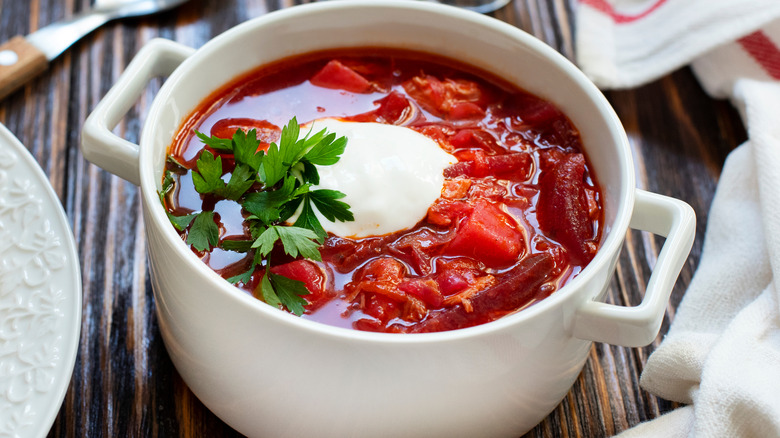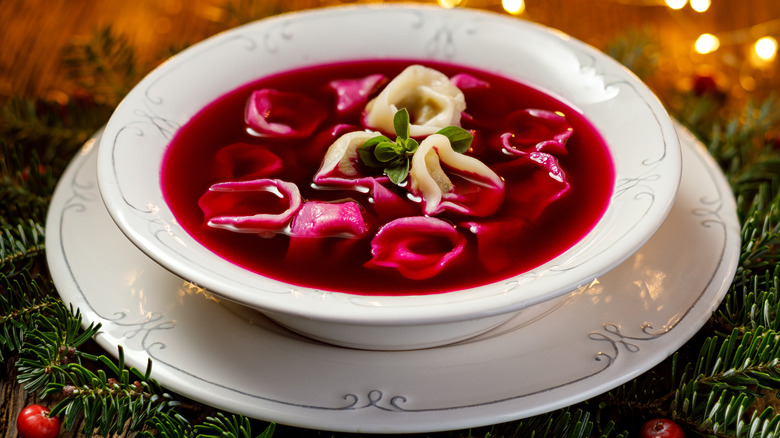How Polish Barszcz Differs From Traditional Borscht
Traditional borscht is a classic comfort food that has kept soup lovers warm in some of the coldest countries on the planet. The red beet-infused Eastern European soup has been a staple of Ukrainian homes for centuries. However, many Russians also claim it as their own. According to the BBC, borscht is originally from Ukraine, but, over time, Russian culture has inherited the soup through the occupation of the nation, dating back to the Stalinist era.
In fact, as Tasting Table notes via UNESCO, borscht was recently added to the List of Intangible Cultural Heritage in reference to Ukraine by the organization over the 2022 summer. The popular soup is made in a variety of ways all over the nation, and it represents a culinary tradition that is now in danger due to the Russian invasion and a wider attempt at cultural assimilation.
Regardless of origin or recipe, traditional borscht has all the components of a hearty meal: meat or mushroom, seasoned vegetables, and potatoes. Shredded beets, carrots, cabbage, and the typical veggies, along with chopped potatoes, tomatoes, onions, and tomato paste. For seasoning, garlic, sugar, salt, and pepper are added, and it is famously topped with sour cream and parsley.
However, as with many popular foods, off-shoots of the classic dish have become popular outside the region. Polish barszcz is one of those enviable variations, but how, exactly, does it differ from Ukrainian borscht?
The Polish variation
While Polish barszcz, meaning borscht in Polish, is similar to the traditional soup, there are still notable differences. Starting with the physical appearance, traditional borscht has a quintessential deep red, opaque color. However, according to Culture.pl, barszcz is more translucent and can range in color from red hues to white.
When it comes to the ingredients list, traditional borsch usually includes meat, potatoes, mushrooms, cabbage, tomatoes, and possibly a variety of beans. However, the basic barszcz typically includes onions, garlic, carrots, and celery, and no meat, according to Curious Cuisiniere. However, it can be made with beef or chicken stock for added flavor. The Polish variety is also served with mushroom uszka ("little ear" dumplings, via Polish Foodies). This dish is popular for Polish Christmas Eve dinner, according to the site.
Polish barszcz is often made with a zakwas or sour starter, which can be fermented or not. Red barszcz alludes to the inclusion of zakwas, which is made with fermented beets while white barszcz means the soup was made with fermented rye flour or rye bread.
However, there are similarities between borscht and barszcz. Both soups can be served either hot or cold, and they both demand a heaping scoop of sour cream on top.

